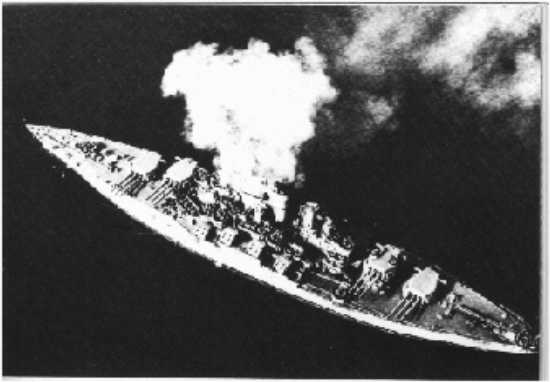

The Tennessee class was an improvement of the older New Mexicos. However, the two ships of the class had some important modifications added to them. They employed a flush deck, and better compartmentalization. With its turbo-electric propulsion it employed the same propulsion systems as the New Mexico class.
During
refits in the 20's and 30's, the class received catapults and improved
AA armament. Although further modifications were scheduled for 1939, the
serious political situation required these ships to stay out of the yards.
This resulted in both ships
lying in Pearl Harbor during the attack on December 7th 1941. Tennessee
received only light bomb damage, and stayed in Pearl Harbor for the repairs.
Only in September of 1942 did she move to Puget Sound Naval Yard for extensive
remodellations.
California
on the other hand was severely damaged by three bombs and two torpedoes
and settled to the ground. She was raised in March 1942 and towed to Puget
Sound for repairs. During their time in Puget Sound, the ships received
improved horizontal armor, torpedo bulges reaching up to the upper decks,
and numerous AA guns of all calibers, including modern 127mm L/38 twin
secondary turrets. Her upperworks and superstructure were rebuild to the
standard of South Dakota. Tennessee returned to the fleet
in May 1943, California in January of 1944. Both ships supported
the US landing operations, were damaged by coastal batteries off Saipan,
and participated in the Battle of the Surigao Strait.
They continued service in
the amphibious support groups off Okinawa, were Tennesse was hit
by a Kamikaze. Both ships were scraped in 1959.
|
|
12 x 356mm L/50 in 4
tripple turrets, in superfiring endarrangement
16 x 127mm L/38 AA and secondary in eight twin turrets, four on each side. 40 - 56 x 40mm L/56 48 - 52 x 20mm single mounts |
|
|
Displacement: 40500 tons
Length: 190.4 meters Beam: 29.7 meters Draught: 9.2 meters Height (Mast): ???? Crew: 2375 Speed: 21 knots |
|
|
3 Floatplanes |